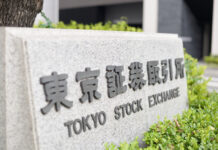All eyes were on crude oil prices early this morning following the news over the weekend that the US administration is discussing a potential ban on Russian oil imports with its European allies. Prices soared at the open in Asia, with Brent crude rallying $21 to trade slightly above $139 a barrel before slipping back below $130.
Sanctioning Russian oil would be the most significant escalation in the West’s response to Moscow’s invasion of Ukraine, and it poses serious negative consequences for the global economy. While Russia’s economy will be hurt the most, Europe will likely fall into a recession and US growth will be hit, with consumers feeling the most pain.
In 2008, demand destruction occurred when prices approached $140. Brent crude actually hit $147.50 in July 2008, shortly before the global financial crisis. Adjusting for inflation, prices need to go above $200 to have a similar effect on consumption. However, the current spike in prices is not a demand-driven shock but a supply-driven one, and there’s no ceiling in sight.
Russia currently exports approximately 4.5 million barrels of crude. If exports were cut in half, prices would likely remain elevated in the short to medium-term around current levels, even if the US and other nations release oil from their strategic reserves. However, if the crisis gets worse and Europe imposes sanctions on Russian oil with no response from OPEC members, expect prices to jump above $200.
It’s not just oil prices hitting multi-year highs. Aluminum, copper, zinc, palladium, corn, and wheat are among the many commodities that have seen a price surge recently. All of which complicates the outlook for central banks across the globe.
Despite rapidly rising inflation, the ECB is likely to delay any plans for tightening policy at its meeting this Thursday. Moreover, the Ukraine war will force the central bank towards a more cautious approach to withdrawing accommodative policies, putting additional pressure on the euro, which has sunk to a two-year low against the dollar and tested parity against the Swiss Franc for the first time in seven years.
The rush to safety has sent 10-year real yields back to extremely low levels of -0.90%; meanwhile, 5-year breakeven rates topped 3.2% for the first time ever. This reflects the nervousness in bond markets about stagflationary pressures, which also sent gold prices above $2,000 momentarily.
Expect the Ukraine headlines to continue to drive markets over the next several days, with volatility remaining elevated as investors try to find out how this crisis comes to an end.












